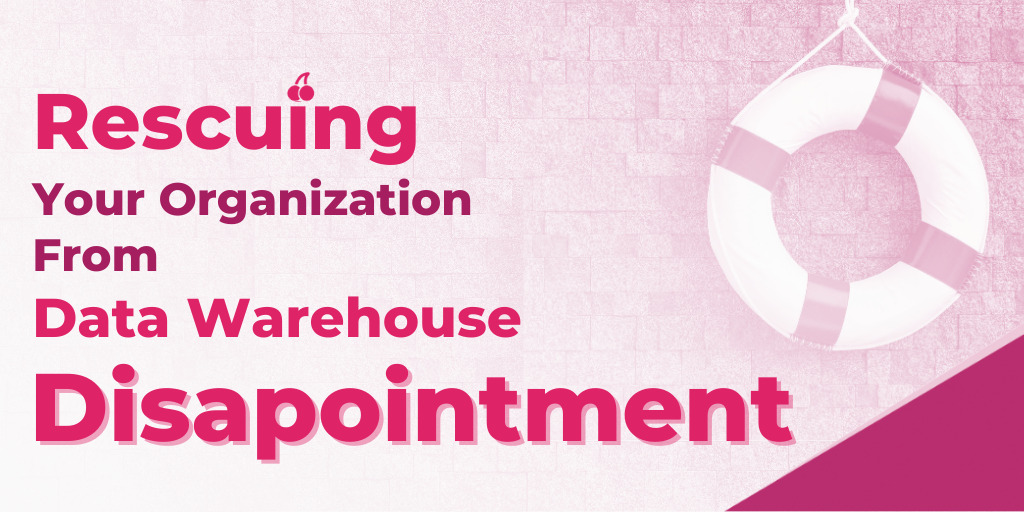
By Tyler Christensen, Head of Industry Solutions at Cherre
As Head of Industry Solutions for Cherre, I have the pleasure of talking to all types of people in our industry, like portfolio managers, CFOs, technology leaders, and partners.
The conversation often turns to their initiatives around implementing a data warehouse, and I frequently hear a common refrain: “Well, we have this data warehouse – but I don’t feel like things have gotten better.” There is a reason for this sentiment.
A data warehouse is not a data strategy.
People tend to think that a data warehouse automatically equals a data strategy due to the immense time and effort involved in standing up a data warehouse.
Standing up a data warehouse can feel like a Herculean task, and for good reason. You need to select a platform, analyze a lot of data, define a lot of things, expose and mitigate data quality issues, and build processes to bring data into the warehouse.
Some of these activities may require new capabilities and new partners, both inside and outside the organization.
These activities can be so challenging and so time-consuming that whatever reason you had for deploying a data warehouse originally is lost. The new “strategy” is “We need to get everything in the warehouse.”
A genuine data strategy extends beyond the mere accumulation of data. It’s more than data for data’s sake. It requires a focus on not only the end users but also the data creators, recognizing that data is the connective tissue across people, processes, and technology.
A data warehouse built without a robust data strategy will likely be missing consideration and planning of these key considerations:
Data purpose: Defining the purpose of data involves answering fundamental questions: What questions are we trying to answer? How is the data used? What is the intended purpose of utilizing the data? Who are the end users of the data?
Data governance: Effective data governance is paramount. It involves determining how data is controlled, what it signifies, when and how it can change, and ensuring compliance with regulatory standards.
Data creation and business process: Data doesn’t simply pop into existence. It is the product of processes. It is essential to understand how the business works, to understand how the data is created, in order to understand how business processes and the data warehouse and align to each other. Understanding that data is a product of processes ensures a more holistic approach to data management.
Data collection and ingestion: Your organization generates all of this (hopefully) great data, but how do you get it into your warehouse? Not all systems your organization uses will make the data available the same way. Also, don’t forget about data that is created outside of your organization, whether by service providers or by data vendors. You need to solve for those pieces too.
Data delivery and consumption: Now that your data is all in one place, it needs to be used – delivered and consumed. This step is where you actually deliver the value of your warehouse. Consider what your original goals were, the questions you want to answer, and how you will serve the data to your end users. Are you powering modeling applications? Building visualizations? Embedding analytics in context? Powering machine learning applications and AI?
Moving beyond a data warehouse to a data strategy that delivers results requires a strategic shift. But companies often feel burnout when they’ve launched their data warehouse and aren’t seeing tangible results that move the performance needle.
Business users become frustrated with how much time these initiatives take, and struggle to see the value for them. This results in lower adoption.
Technology teams become frustrated that people aren’t using the warehouse. They struggle to understand what to fix, where to enhance, and how to prove value – getting pushback from business users who don’t want to deal with “another data project.”
Taking a step back and revisiting the strategy with fresh eyes can help.
Cherre offers a unique approach to crafting an effective data strategy that empowers you to use data capacities you’ve already built, and confidently accelerate what you haven’t yet.
Our solutions and platform are purpose-built for real estate, backed by teams with literally centuries of collective experience in real estate, data, and asset management – helping ensure that your strategies and tools support your asset lifecycle from end to end.
We love chatting about transforming a data warehouse into a data strategy, and would love to discuss the challenges your organization is facing. Schedule a meeting today!
Cherre’s Tyler Christensen is real estate technology strategist, with roots in finance, asset management and portfolio management. As our Head of Industry Solutions, he leverages his data and domain expertise to help our clients future-proof their data ecosystems and unlock value from their data.